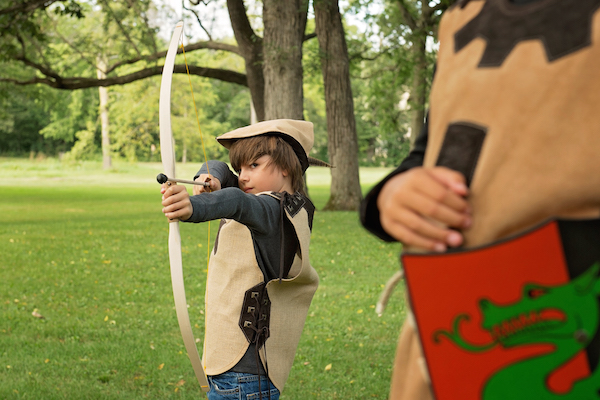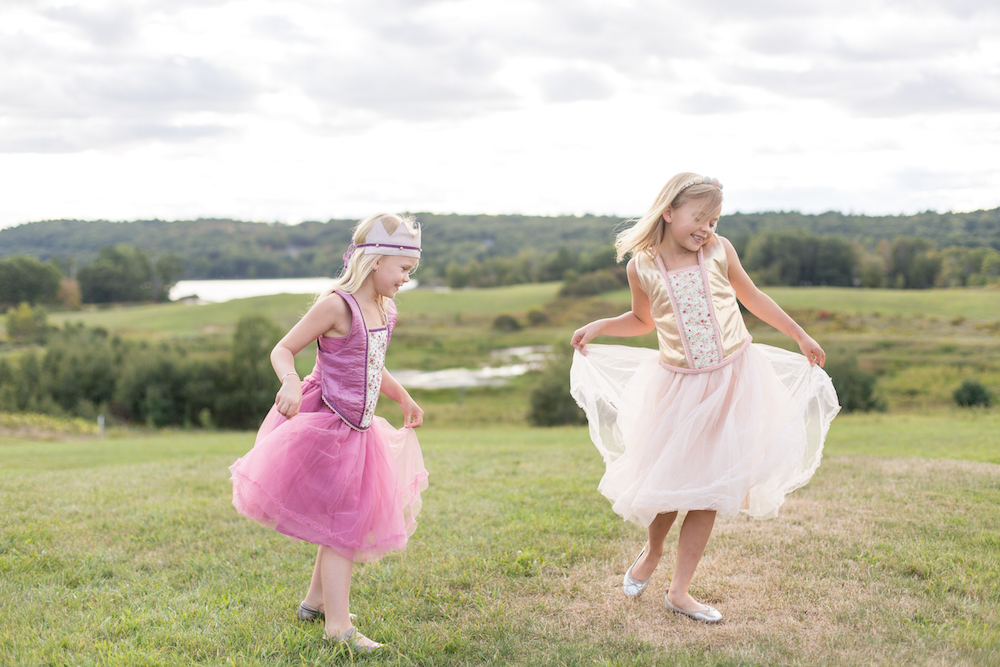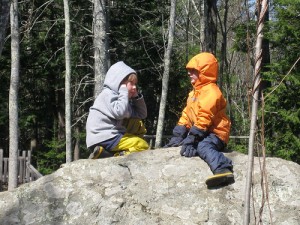Children throughout the ages have enjoyed dressing up in costumes and engaging in dramatic roleplaying. Whether your child is a dragon, a princess, or a fairy, your child’s brain is going into high gear when she puts on a costume!
And although it may appear to you as just play, when your child dons that cape, crown, or pirate’s eye-patch, his brain is developing in more ways than you can imagine. As early childhood educators know, play is the work of the child, and children benefit cognitively, physically, socially, and emotionally through dress-up play.
Here are 10 developmental benefits of dress up play for kids:
1. Brain Building
Dress-up engages your child’s brain and memory. Dramatic play requires kids to remember what they’ve seen or heard. They remember how their mother behaves when performing household chores when they are imitating her. Or they recall the details of a fairy tale they’ve heard before acting it out.
2. Vocabulary Building
Dress-up play builds vocabulary as a child decides what his or her character would say. It gives them a chance to expand their vocabularies with words and phrases that they might have heard in stories, but wouldn’t ordinarily use. Children may then begin to use these new words in conversations.
3. Problem-Solving
Who’s going to be the doctor? Who’s going to be the patient? Children must make decisions when they engage in dress-up play. They practice problem-solving problems when deciding on what costumes elements and props each character needs to act out a scenario.
4. Empathy
When a child is engaged in role-play, it helps her see the world through another’s eyes which increases empathy – whether pretending to be a parent nurturing a baby, a doctor taking care of an injured patient, or a firefighter putting out a fire. Dramatic play helps children understand the role that helpers play in in our lives.
5. Emotional Development
Children are constantly confronted with scary situations that they don’t understand – whether witnessing an accident in real life, or seeing violent images on TV. Children process their fears through play, which helps them make sense of the world, and overcome their feelings of helplessness.
By allowing children to act out their fears through dress-up and role playing, we are helping their emotional development.

6. Motor Skills
Children develop fine motor skills by putting on dress-up clothes, whether buttoning a shirt, zipping up pants, or tying on a pirate’s bandana
They use their large motor skills when engaged in role-play, whether they are jumping like a superhero, running like a baseball player, or twirling like a ballerina.
7. Gender Exploration
When children choose costumes and characters to be, they are able to explore different gender identities and the behaviors of those characters.
While boys often want to be superheroes, firemen, or pirates, and girls often want to be fairies and princesses, it is normal and healthy for children to try on different gender roles as they learn about the world. A child should never be ridiculed for pretending to be a different gender.
8. Imitation
Children are naturally imitative creatures. They learn about the world by imitating the lives of the adults and others around them. Through dress-up and dramatic role-play, children explore the lives of other people by imitating their actions, feelings and words.
9. Socialization
Dress-up play encourages cooperation and taking turns. Children learn how to negotiate as they agree on stories and rules. They develop interest in others and learn how to give-and-take.
10. Imagination
Children’s imaginations are limitless, and have not yet been hardened and constrained by the “realities” of the world. Rudolf Steiner, the founder of Waldorf education, believed that imaginative play in early childhood is the key to creative thinking during the adult years.
When children engage in dress-up play, their imaginations are given free reign. There is no limit to who, where, or what they can be.
Wishing the children in your life many hours of fun dress-up play!
Warmly,

Here’s a list of recommended items to include in your child’s dress-up basket:
- Play Silks can become capes, veils, a pirate’s head band, a belt, or a baby blanket.
- An elastic waist Fairy Skirt can become a fancy dress or a veil when worn on the head.
- Our knight’s Sword Holder Belt can hold a wooden toy sword or a tool like a hammer.
- Sunglasses, long gloves, strands of beads, and headbands add glamour.
- Hats of all kinds– a cowboy hat, a fedora, a Robin Hood hat, a tall cone-shaped princess hat.
- A chef’s hat and child-sized apron.
- A doctor’s scrubs, and face mask.
- And don’t forget to add your child’s Halloween costumes to the basket when the holiday has past!
What items are in your child’s dress-up collection? Please add your suggestions in the comments below!



